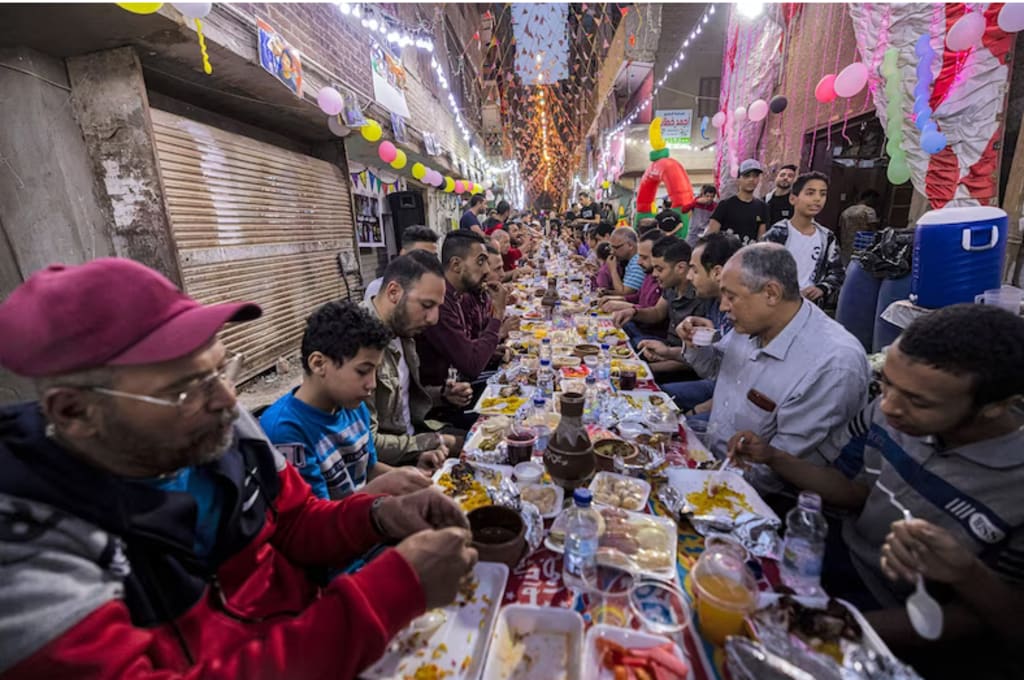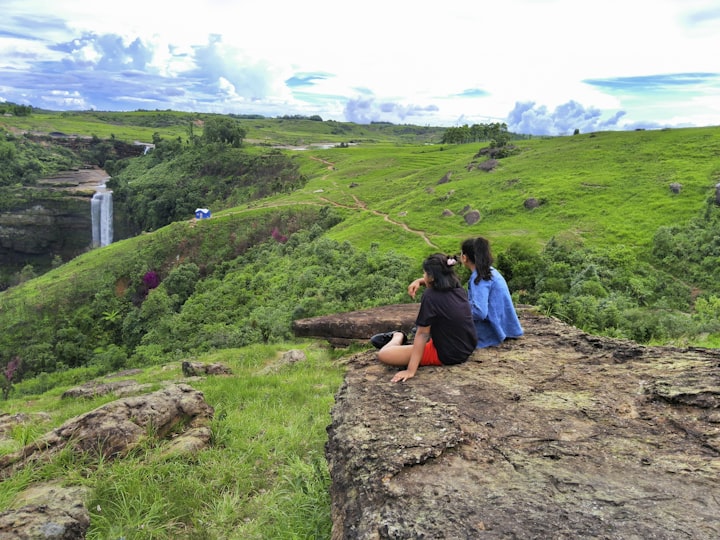How do Muslims Celebrate Ramadan? Here are 5 Unique tradations
Muslims celebrate the most important month of the year in a variety of ways, including the sounding of the iftar cannon and opulent meals.

Ramadan, the holiest month of the year in Islamic culture, is welcomed by Muslims. Ramadan, which is celebrated as a time of fasting and prayer throughout the world, is also known for a special set of customs that reflect the Islamic community's sense of camaraderie.
Here are a few beloved Ramadan rituals, such as the booming cannons that herald the breaking of the fast and joyful lantern-lit evenings.
1. the iftar cannon's boom
A boom signals the completion of the day's fast as well as the official start of Ramadan. At sunset, the police fire vintage cannons to signal iftar, or breaking the fast.
The origin of this Ramadan custom is unclear, but all reports lead to Cairo. It makes sense that a Mamluk dynasty ruler in the 15th century would test a cannon that had been given to him by shooting it at dusk during Ramadan. According to reports, residents of Cairo believed the iftar was intentionally rung.
The sultan gave the order to have a shell fired each day at sunset to signify iftar after observing the reaction of the populace to the coincidental event. Up to 1859, live ammunition was utilised; nevertheless, for the densely populated metropolis, blank ammunition was favoured. By the end of the 19th century, the ritual had first extended to the Levant, then to Baghdad, and finally to the Gulf and North African nations.
2. a wake-up call at dawn
A masaharati, which plays the wake-up call, existed before alarm clocks. And the custom is still practised. A masaharati is tasked with walking the streets during Ramadan, playing the flute or beating a drum to awaken Muslims for suhoor, the pre-dawn meal before the fast begins.
Utbah bin Ishaq, Egypt's 7th-century governor, was the first masaharati. "Servants of Allah, have suhoor, for there is blessing in suhoor," he said as he walked through the streets of Cairo at night.
Over time, the profession spread to other Islamic countries under different names and melodies. A naffar in Morocco blows a trumpet to wake people up.
The masaharati goes door to door in a neighbourhood in Yemen. The role was so popular in the Levant that each neighbourhood had its own masaharati who roamed the streets, beating a drum and calling out to the inhabitants, "Wake up, sleeper, there is no God but Allah the everlasting."
3. Providing illumination
For centuries, lanterns have been associated with Ramadan, ushering in the holy month and literally lighting the way. The crescent moon and star, Islamic symbols, are also prominently featured in the decorations.
Ramadan nights feature a full social life and entertainment as people meet in markets, cafes, and streets, where decorations and lights create a festive atmosphere for the month, as Muslims abstain from food and drink from dawn until sunset.
Each country has its own Ramadan decorating style. Cairo's streets are festooned with vibrant fabrics, lamps, and lanterns. Arabesque designs are popular in North Africa. Colored lights and ornaments of eight-pointed stars and crescent moons hang from the ceilings of shopping malls and lampposts in the Gulf countries.
While there are no official colours for Ramadan, green, yellow, purple, and turquoise, which represent peace and spirituality, are commonly used in decor.
4. Loads of banquets...
During Ramadan, communal banquets held in most Arab countries may best represent Islam's fraternity. Fasting teaches us compassion and empathy for those who have few or no resources.
In Egypt, charitable banquets are held in residential neighbourhoods, where everyone pitches in to contribute food or tables, or to help with the nightly event's organisation.
In Saudi Arabia, lavish banquets are held in the courtyards of Mecca's Grand Mosque and Medina's Prophet's Mosque. In the UAE, makeshift tables with a feast of food are set up in the courtyards of mosques and Ramadan tents. They are organised by charities and supported by donors.
5....full of traditional foods
Tables are laden with sumptuous dishes associated with the holy month. Some dish names may be the same across countries, but recipes or ingredients may differ.
Because the Prophet Mohammed broke his fast with dates and water, dates have become a staple on every table. Muslims have been practising this for centuries. Dates are high in sugar, potassium, magnesium, and fibre, making them an excellent post-fasting snack.
Most Ramadan dishes are stew-like, higher in calories, and less reliant on spices, which may aggravate thirst, all in the name of keeping the body hydrated and filled during the long fast.
Thareed, an Emirati dish of bread cooked in broth with lamb and vegetables; molokhia, an Egyptian soup made of molokhia, a spinach-like green, usually served with rice and roasted chicken; and harira, a rich Moroccan soup with meat, tomatoes, vermicelli, chickpeas, and lentils, are among the iftar dishes.
Levantine-style side dishes are popular, such as moutabal with eggplant and ful with fava beans and a garlicky-lemon oil.
Ramadan sweets include chebakia, a Moroccan honey and sesame cookie; luqaimat, fried doughnut balls sweetened with honey or date molasses and sprinkled with sesame; rice pudding; qatayef, a pancake stuffed with cream or nuts, then fried and sweetened with honey or syrup; and masoub, Yemeni banana bread pudding.
About the Creator
T MANJUNATHA
Start writing...I am a Honest writer, please follow me






Comments
There are no comments for this story
Be the first to respond and start the conversation.